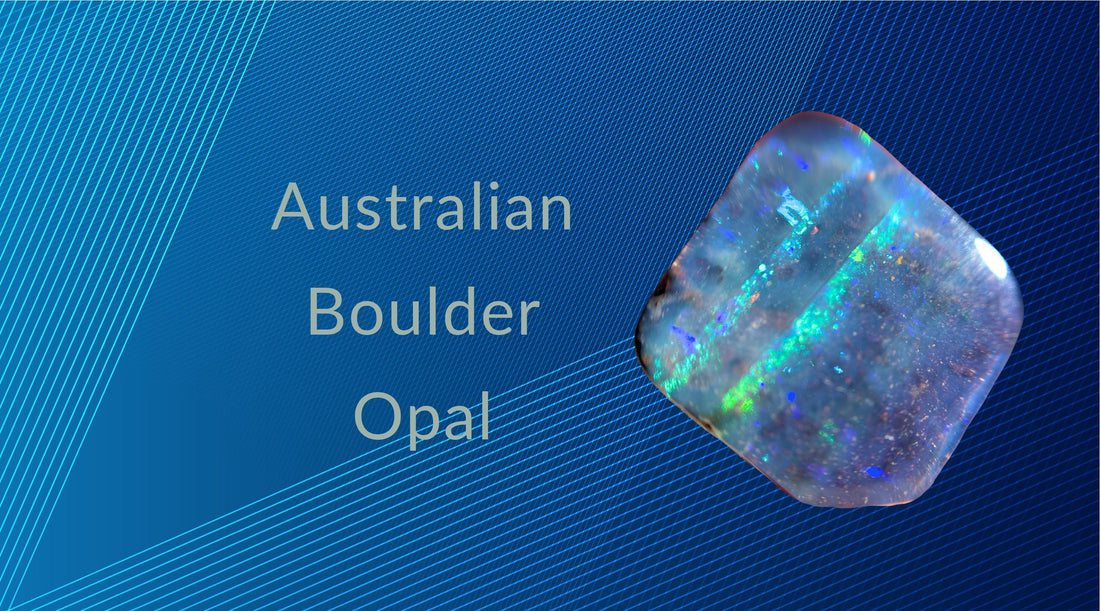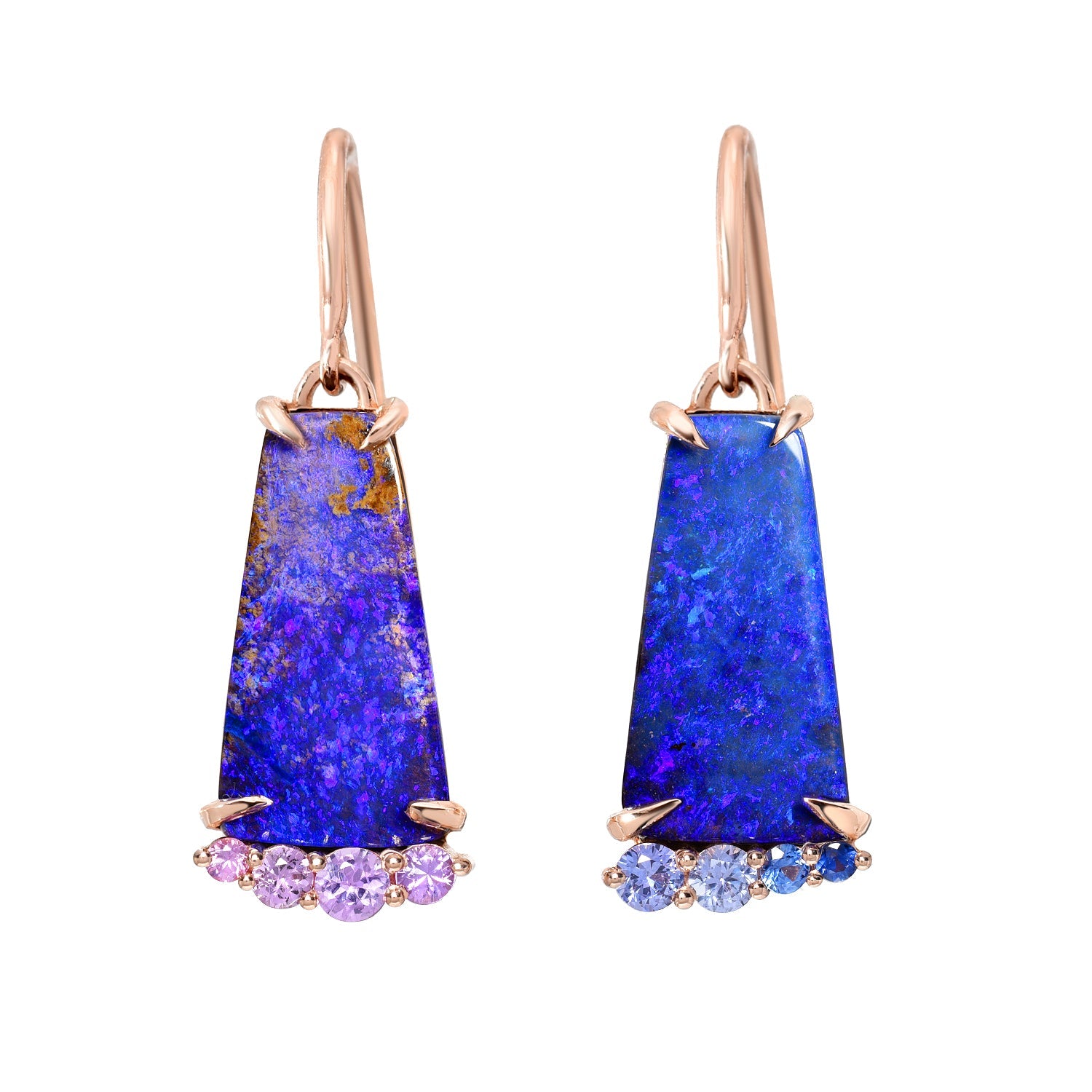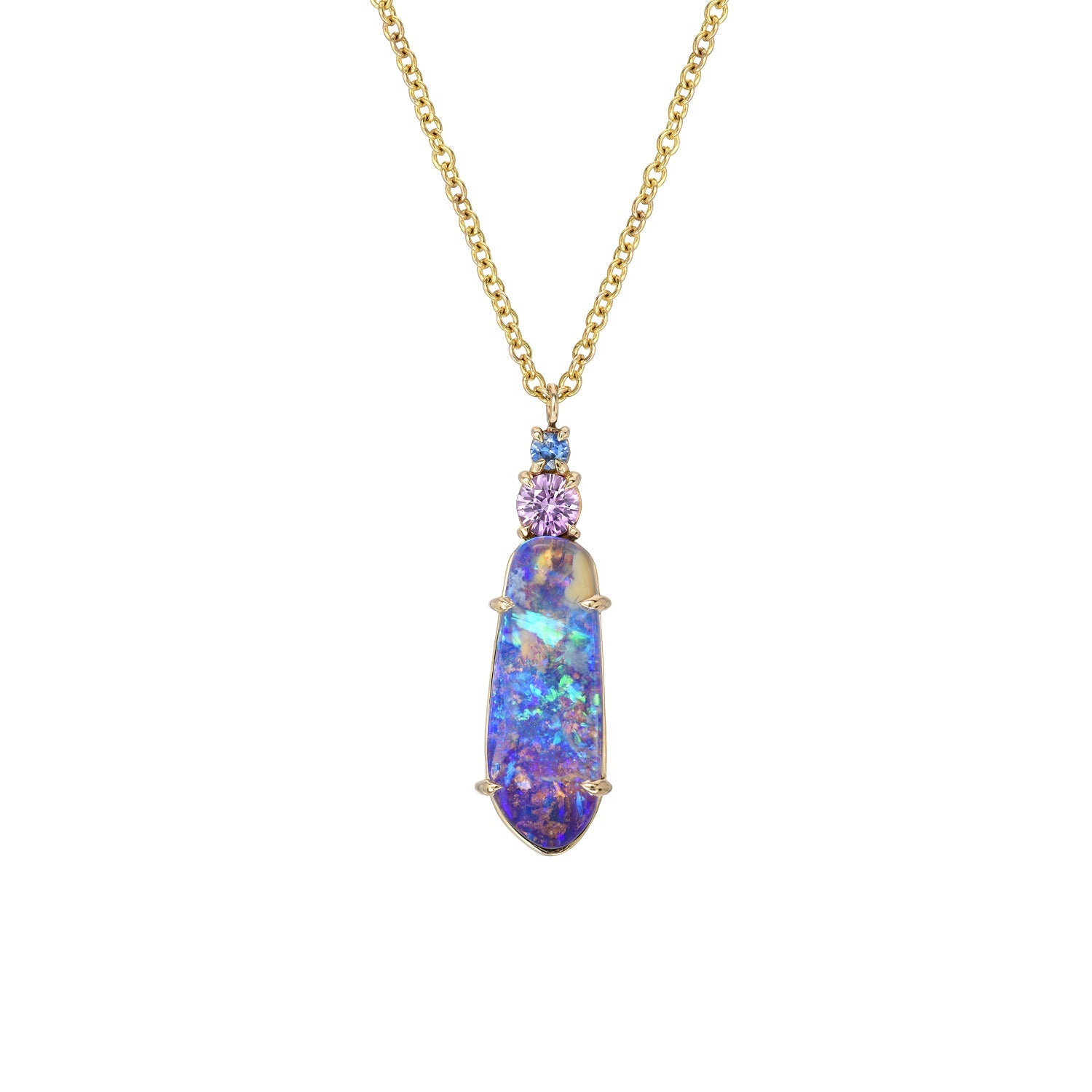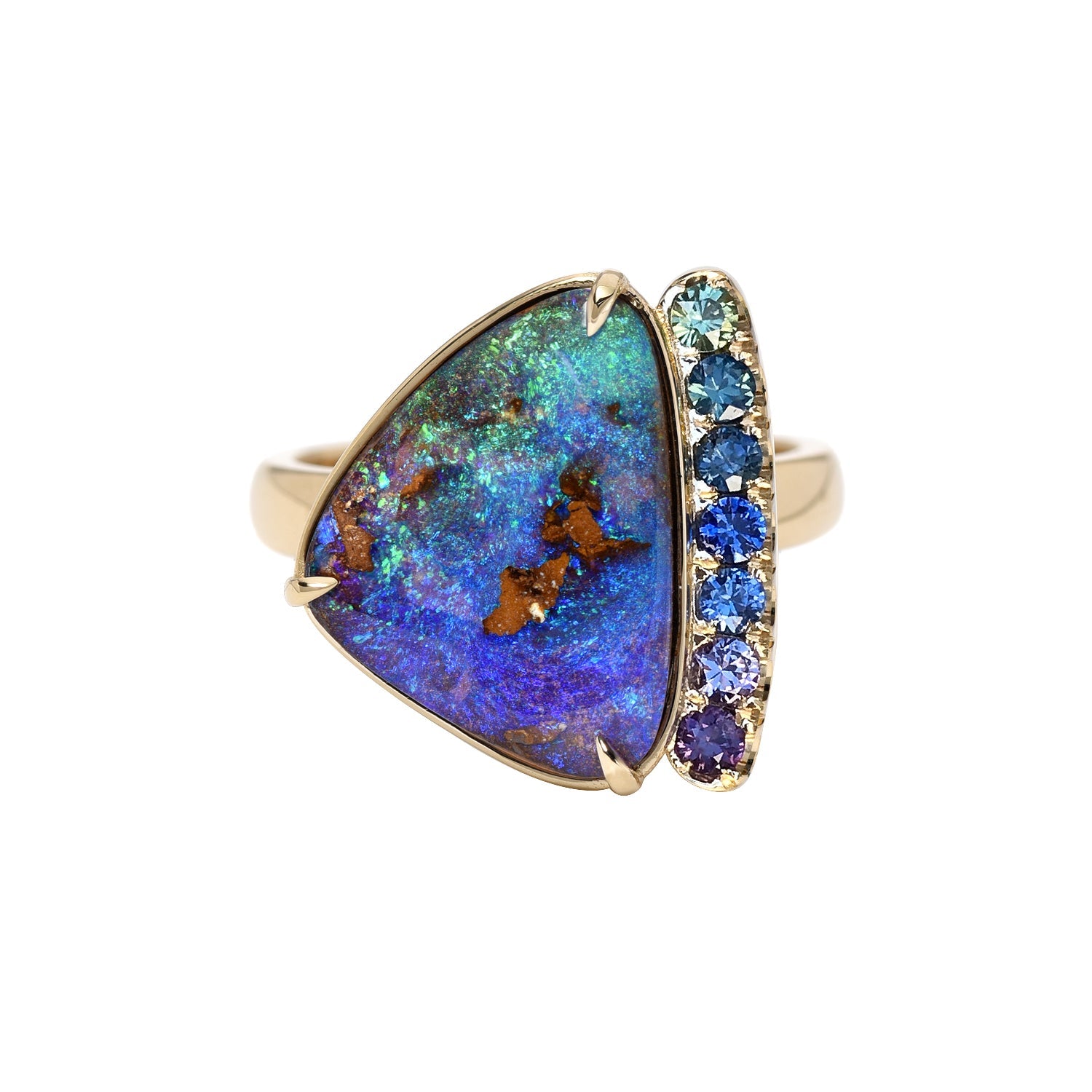
What Are Boulder Opals --- Learn how they are formed, valued, and makes them so unique.
luis gomezShare
In the Australian outback, groups of miners work tirelessly, sifting through rock, under the sweltering heat, swamped by monsoon rainfalls, in hopes of finding Boulder Opal. It’s a dream come true for them and the primary reason why most get up in the morning, gulp down their cup of joe, and go to work. But what exactly is Boulder Opal? And more importantly, why is it so coveted? In this article, we’re going to give you a deep dive into the phenomenon that is Boulder Opal. What is Boulder Opal? What’s so special about it? And the difference between precious opal gemstones; specifically the difference between Black Opals and Boulder Opals.
What is Boulder Opal?
Boulder Opal is a type of Opal found primarily in Queensland, Australia. There are, however, a few deposits of it scattered around the world, for example in New South Wales, Mexico and Honduras - even in Canada and Brazil, but they are extremely rare. Boulder Opal is the hardest and most stable of the precious Opal family. How hard is it? It can reach above 6 on the Mohs scale. According to GIA (Gemological Institute of America), Opals can range between 5 - 6.5; so this puts Boulder Opal at the top end of the range for Opal “hardness.”

Image from Gem-A.com
Boulder Opals are most easily distinguished by the brown ironstone found on the back of them or woven throughout the stone’s face. As the name might suggest, Boulder Opals are mined from large boulders, mainly composed of ironstone or sandstone from deep underground. Opal forms in the cracks, fissures and chasms in these boulders in what miners call either “the pocket” or “the vein.”
On account of the fact that the “veins” are so thin in some boulders, miners extract the gem with some of the ironstone intact on the rear of the Opal in order to form a full-size and robust enough gemstone. The result is an Opal stone, more natural, and raw in appearance than other types - that’s one of the reasons why so many people adore Boulder Opals.
Another great advantage, aside from its resistance and hardness, to that ironstone backbone, is that it provides the Boulder Opal with a darker backdrop. This means that the Opal, regardless of its natural color or hue, will likely display a darker body tone — which highlights the vibrance of its pattern and colors. Some are even dark enough to be called Black Boulder Opals.
Why Boulder Opals are so special

Hidden Cove Sapphire and Opal Necklace
How are Boulder Opals formed?
Boulder Opals, like all other Australian Opals, were formed millions upon millions of years ago when Australia was an inland sea. They are the product of erosion, volcanic geothermal pressure, the region’s particular climate, and the ebb and flow of the Pacific Ocean over what would eventually become the continent of Australia.
Boulder Opals are mainly found in cracks, cavities, and other types of crevices within ironstone boulders situated beneath the surface of the earth. Silica resulting from dissolved sand trickles down through cracks and then hardens into the “vein” and becomes what we know as Opal. This geological process, summed up in a sentence, that took eons to manifest — it’s a process that many geologists to this day, still debate the precise details of. What is widely accepted is that Opals can only be found in specific and extremely rare places on the planet, with 95% of them unearthed in Australia.

Mining Town In Australia
If you want to know more about the fascinating history of Opals, like how they were formed, their links to the British Crown, or how they are valued, please visit our blog where we share answers to your many Opal-related questions.
How are Boulder Opals valued?
Though there may not be a perfect system for valuing Boulder Opals, the trend follows that of valuing other types of Australian Opal stones. The more colors present, the rarer they are (like red), the more distinct their pattern, and the darker the stone, the more valuable a Boulder Opal will be. Additionally, the visibility of host stone from the Opal’s face is key - an Opal with a clean face, with minimal or no ironstone showing through, will demand a greater price than if the host rock crops through.
A key thing to understand is that due to their ironstone content, valuing a Boulder Opal according to its weight (or in carats) is not generally accepted in the industry. (Though it’s not unheard of to come across gem dealers that price them according to carat - presumably to appeal to clientele accustomed to per-carat calculations.) Nonetheless, to provide a rough idea of value, top-quality boulder Opal can fetch prices of around $2500 per carat. A clean-faced one, with no ironstone spots, is much more valuable than one exhibiting its host stone.
What’s the difference between Black Opals and Boulder Opals?
Due to the fact that Boulder Opal can form in veins of dark ironstone or lighter sandstone, the resulting gems can exhibit a range of body tones. Combined with the precious opal that sits atop this host rock, the gem may appear as a light Boulder Opal, a dark Boulder Opal, or even a Black Boulder Opal. Depending on the way the vein of color passes through the host rock, the Boulder Opal may have either a level or undulating surface. In either case, host rock becomes an inherent part of the gemstone.
Meanwhile, Black Opals are cut such that they entirely free of any host rock. This is a fundamental difference between Black Opals and Boulder Opals. In addition, Black Opals may have a potch base and they are most often cut into geometric shapes with higher domed cabochons to best flaunt their deeper layer of precious Opal. Black Boulder Opals are typically cut a bit flatter and they depend on their ironstone reinforcement in order to maintain their structural integrity.
How to care for Boulder Opal
Boulder Opals are a bit more robust than other types of Opals, due to the sedimentary host rock attached to the precious gem. This adds an element of resilience and stability other Opals lack. Nonetheless, all Opals should be treated with care, and following these general tips can help keep your Opal jewelry safe from damage:
- Store Opal jewelry away from other pieces with harder stones that can scratch Opals
- Remove Opal rings and other Opal jewelry before activities that might expose them to blunt force (ie: sports, gardening, etc…)
- Avoid chemical exposures (ie: shampoo, chlorine, etc…)
Boulder Opals are an endless source of inspiration - the colors, the shapes, the pictures they paint. Here at NIXIN Jewelry, we find so much beauty in each unique stone...come see what inspires you.



